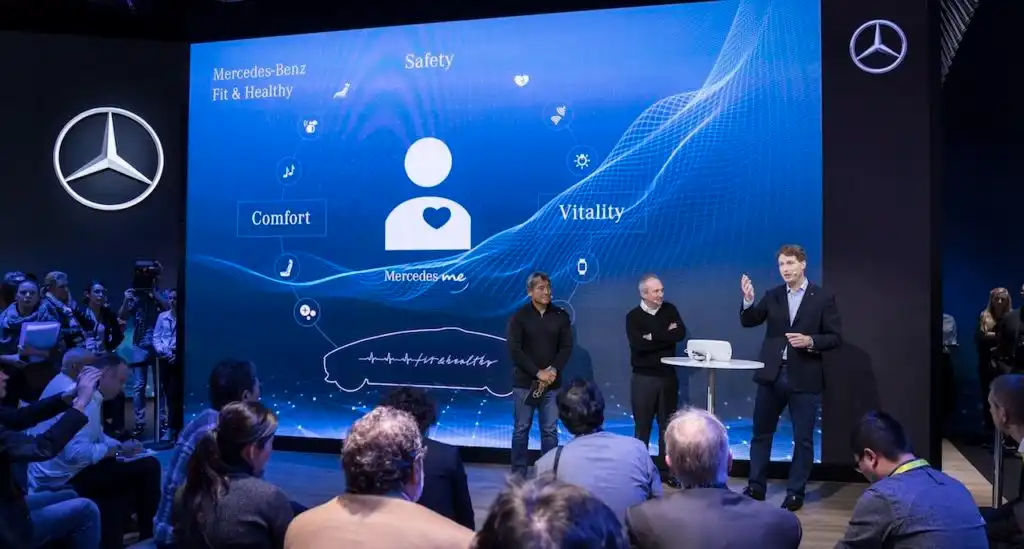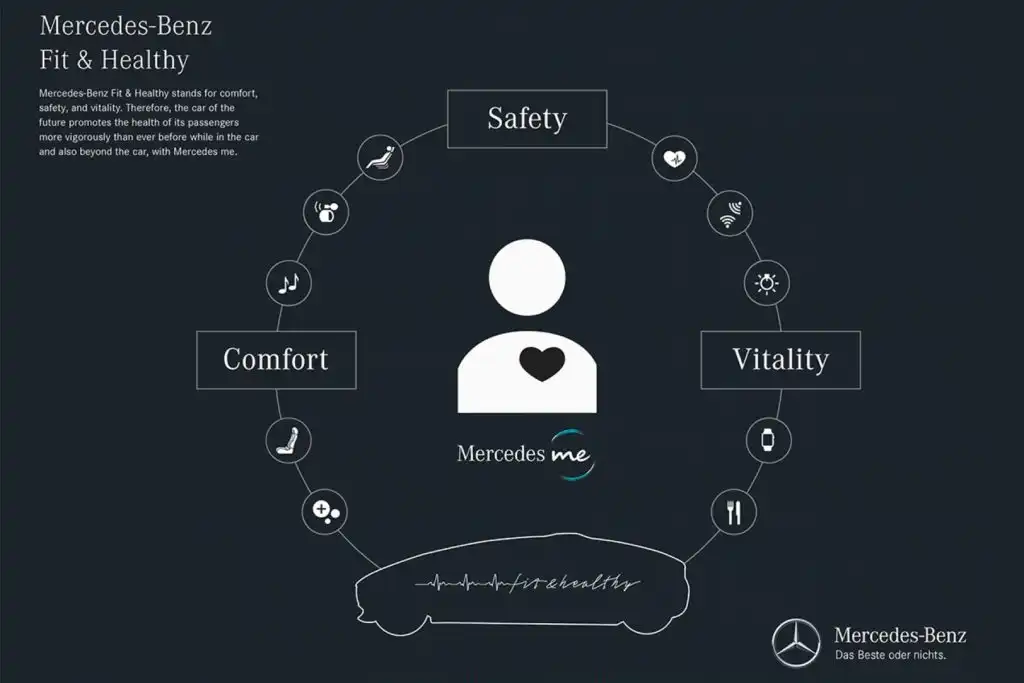The automotive market has surprised everybody with eHealth ideas. Did that bring a new trend in car design?
The Consumer Electronics Show (CES) has resulted in something beyond what we've become accustomed to, namely autonomous cars.
This enormous annual technology event has brought a lot of ideas that year regarding how to use the time spent in the car to support the driver's mental and physical health.
The combination of motorization and health was then an abstract idea, but two brave players from the industry dared to try and break stereotypes.
Let's take a closer look at cars equipped with devices supporting a healthy lifestyle.
Auto/aromatherapy
Hyundai has engaged IDEO studio, which focuses on user-centered design and their needs, to imagine the future of healthy driving. Together they've developed a sensory stimulation system providing a sensual micro-experience for drivers.
These sensations could be personalized and even sequenced to meet different driver needs. For example, they could relax a stressed driver stuck in traffic or alert them if they lose concentration during the ride.

Hyundai planned to influence the driver's mood using various sensory triggers such as the following:
- Posture — Hyundai refers to research suggesting that the driver's position changes when they lose focus behind the wheel. That's why the manufacturer developed a self-monitoring system that automatically adjusts the driver's seat to a more upright position or massages the lower back to relax the driver.
- Smell — some fragrance oils naturally affect mood. For instance, lavender or eucalyptus can calm the driver, or cedar or mint oils can stimulate and sharpen the senses.
- Light — Hyundai uses light just like nature influences people's moods: daylight keeps us active, and low-intensity light supports relaxation. Different levels of warm and cool light are used on a dashboard; therefore, they impact the alertness and mindset of the driver.
- Temperature — Hyundai's Healthcare Cockpit can detect the temperature inside the car and direct cooler or warmer air toward the driver to increase their reaction speed or comfort.
- Sounds — Music and radio applications can sync with Healthcare Cockpit's sensors and create selected ambients as well as alert the driver or have a relaxing effect on them.
Hyundai's Healthcare Cockpit was designed to allow drivers to change the modes to increase their efficiency or comfort.
Instead of medicine, Dr.Hyundai recommends nerve-soothing playlists with new music, phone calls with family and friends to nullify the feeling of being isolated or recording voice notes and to-do lists with one touch.
Speedometer, fuel gauge, and... heart rate monitor. Self-monitoring of a driver
Mercedes-Benz also experimented with combining motorization with self-monitoring of health.
Their concept cars, like those of Hyundai, allow drivers to adjust the temperature, light, sounds, and smells to fulfill driver needs.
Moreover, the Mercedes' steering wheel has sensors measuring pulse and seats that can adapt to the driver to increase blood circulation.
These features weren't pipe dreams that applied only to concept cars but solutions meant to be available in the next Mercedes A-Class model.

Furthermore, the "Fit & Healthy" concept vehicle showed that a car could actively promote well-being.
Mercedes wanted to give passengers such in-vehicle experiences as "Regeneration," "Activation," "Movement," and "Fit & Healthy," as well as physical and mental stimulation through aromas, movement, massage, light, ionization, and ambient control.
These sensations are multi-dimensional both physically and in terms of sensory inputs, including putting passengers into a state of agitation using acoustic transmitters, guaranteeing a unique sound experience.
Mercedes' innovations are going even further with "Predictive Emergency Defense" (PED). This medical application integrated with the car's system was designed to detect the risk of losing consciousness by professional drivers.
Thanks to a special vest equipped with ECG sensors, Mercedes plans to prevent accidents.
If the driver suddenly loses consciousness, PED will automatically activate the alert system and, in a critical situation, will stop the car and call for help.
Innovations in automotive design. Where to next? Destination: Health.
Using the time spent in a vehicle to support well-being is just a glimpse of what lies ahead.
It's predicted that children in the future won't have to learn how to drive because autonomous cars will relieve them of this.
So if cars can already use light or oils to keep us focused behind the wheel.
Who knows if, in a few years, other oils, light, and sound won't be used to put us in a state of total relaxation and maybe even sleep while we're transported from point A to point B by autonomous cars?
Since cars are already trying to take care of our health to such a degree, it begs the question of how long we'll wait for telemedical appointments in our cars.
Hero shot: Pixabay.com








